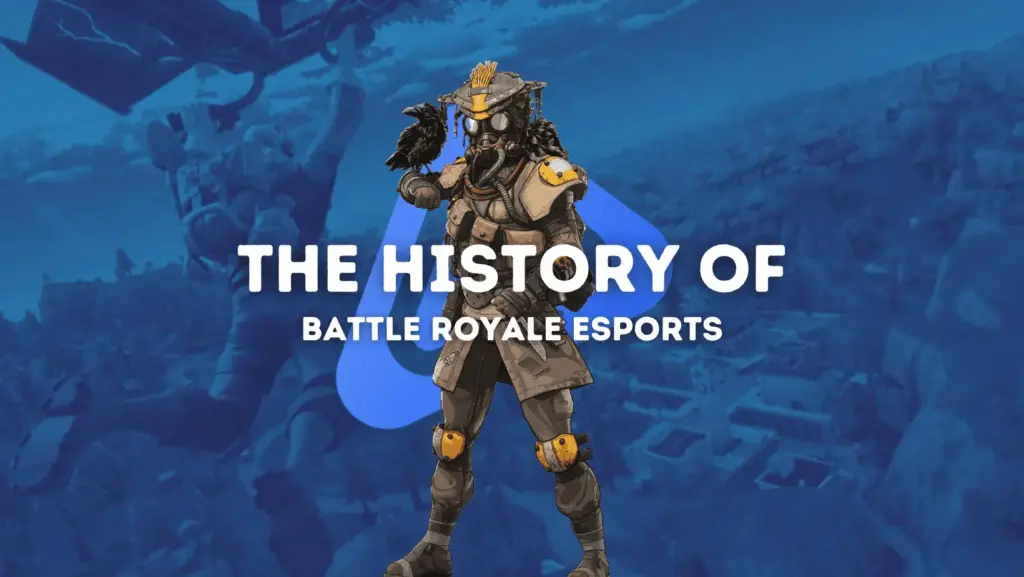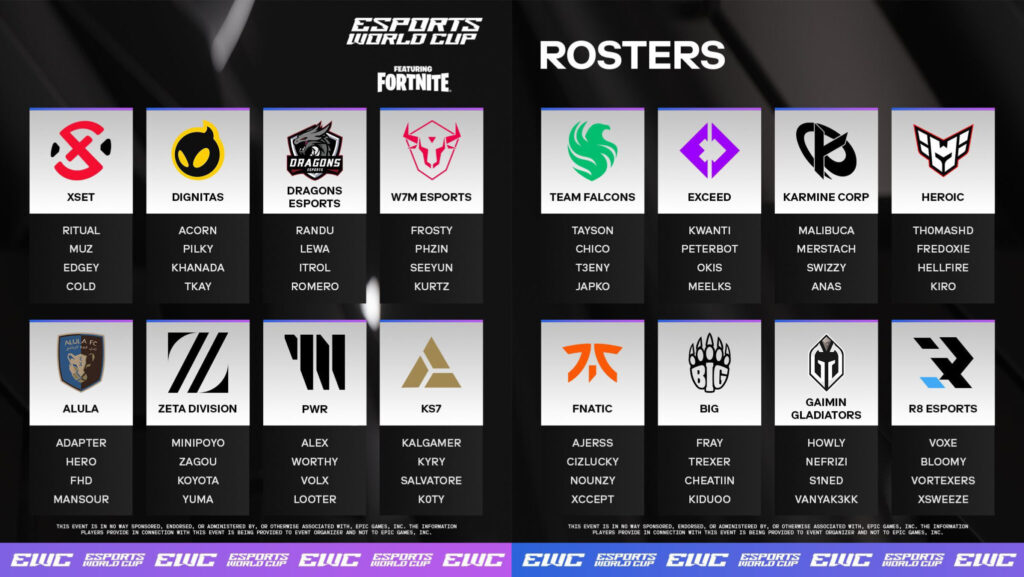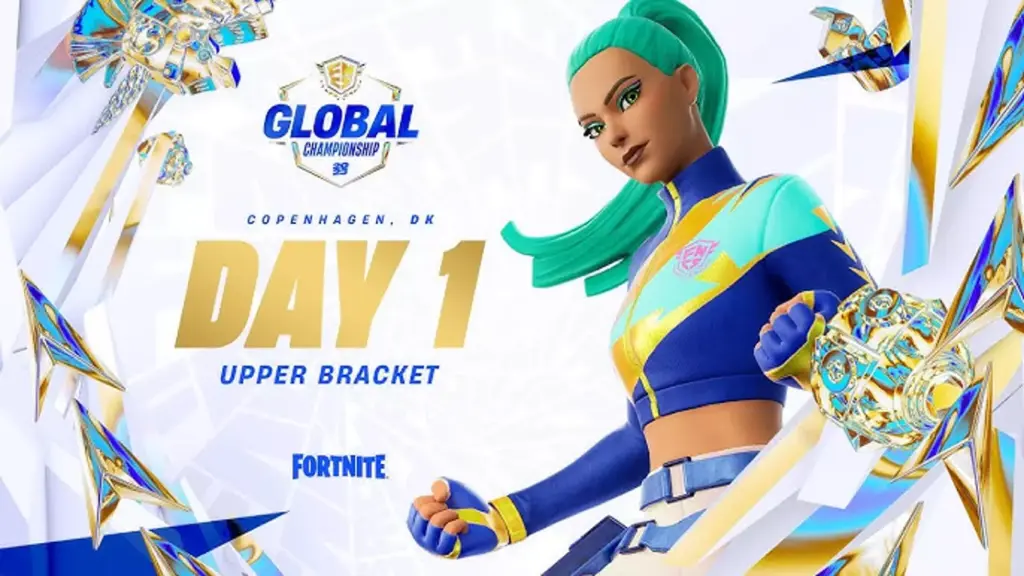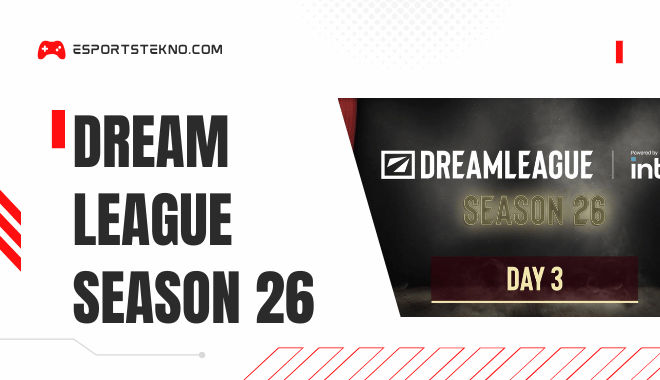In the ever-evolving landscape of competitive gaming, Fortnite Esports has carved out a massive space for itself, transforming from a quirky battle royale game into a legitimate esports powerhouse. Whether you’re a casual player dreaming of going pro or just a fan who loves watching the best of the best duke it out for massive prize pools, this comprehensive guide to Fortnite esports will bring you up to speed on everything you need to know.
From humble beginnings to million-dollar tournaments, the journey of Fortnite as an esport has been nothing short of extraordinary. And yes, we’ll definitely dive into those juicy esports player salaries that have turned teenage gamers into millionaires practically overnight! So grab your favorite Slurp Juice, find a cozy bush to camp in, and let’s drop into the fascinating world of competitive Fortnite.
The Birth of a Battle Royale Phenomenon
Before we jump into the nitty-gritty of tournaments and esports player salaries, let’s take a quick trip down memory lane. Epic Games released Fortnite: Battle Royale in September 2017 as a free-to-play spinoff of their original “Save the World” mode. Nobody—not even Epic themselves—could have predicted the cultural tsunami that was about to hit.
The game’s unique blend of shooting mechanics, building skills, and cartoon aesthetics created an instantly appealing package that attracted players of all ages. Within months, Fortnite had become more than just a game; it was a global phenomenon, complete with dance crazes, mainstream media coverage, and celebrity endorsements.
But Epic Games had bigger plans than just creating a popular battle royale. They saw the potential for Fortnite to become a serious competitive esport, and in 2018, they made the jaw-dropping announcement that would change everything: they were committing $100 million to Fortnite esports for the first year alone. This unprecedented investment sent shockwaves through the gaming industry and instantly legitimized Fortnite as an esport to be reckoned with.
Fortnite World Cup: The Tournament That Changed Everything

If there’s one event that defined Fortnite as a major player in the esports scene, it’s undoubtedly the 2019 Fortnite World Cup. This tournament wasn’t just big—it was astronomical.
Held at Arthur Ashe Stadium in New York (yes, the same venue that hosts the US Open tennis tournament), the Fortnite World Cup featured a prize pool of $30 million, making it one of the largest in esports history at that time. The solo competition was won by Kyle “Bugha” Giersdorf, who took home a life-changing $3 million at just 16 years old. Let that sink in for a moment—a teenager became a multimillionaire by playing Fortnite!
The duos competition was equally impressive, with Emil “Nyhrox” Bergquist Pedersen and David “Aqua” Wang splitting the $3 million first-place prize. The Creative Cup and Pro-Am events rounded out the weekend, showcasing different aspects of the Fortnite ecosystem.
The World Cup wasn’t just notable for its prize money, though. It represented a watershed moment for esports player salaries and opportunities. After seeing the life-changing sums available, organizations began investing heavily in Fortnite talent, offering substantial salaries and benefits to secure the best players. Overnight, being a professional Fortnite player became a legitimate career aspiration for countless young gamers.
The FNCS: Fortnite’s Competitive Backbone
While the World Cup grabbed all the headlines, the Fortnite Champion Series (FNCS) has become the backbone of competitive Fortnite. Introduced in Season X, the FNCS provides a consistent competitive structure across multiple seasons each year.
Each FNCS season typically follows a similar format: several weeks of qualifiers leading to finals with substantial prize pools. The beauty of the FNCS lies in its accessibility—anyone can potentially qualify through Arena mode and open qualifiers, making it a true test of skill rather than invitation or reputation.
Over the years, the FNCS has evolved in format, switching between solos, duos, trios, and squads depending on the season. This constant evolution keeps the competitive scene fresh and challenges players to adapt their strategies and team compositions regularly.
Notable FNCS champions include players like Benjy “Benjyfishy” Fish, Kyle “Mongraal” Jackson, Tai “TaySon” Starčič, and many others who have consistently performed at the highest level. These tournaments have helped establish the competitive meta and showcase innovative strategies that filter down to the broader player base.
The Economics of Fortnite Esports: Breaking Down Those Juicy Salaries
Now, let’s talk about what everyone’s really curious about: the money. Fortnite has completely revolutionized esports player salaries and created economic opportunities that were unimaginable just a few years ago.
Read this: The Truth About eSports Player Salaries: Breaking Down the Numbers
At the top level, Fortnite pros typically earn money from several sources:
Tournament Winnings
This is the most visible form of income, with prize pools ranging from thousands to millions of dollars. Since Fortnite’s competitive launch, Epic Games has distributed over $100 million in prize money, making it one of the most lucrative esports in history.
The distribution of prize money tends to be top-heavy, with winners taking a substantial portion of the pool. For example, in major tournaments like the World Cup, the difference between first and tenth place can be millions of dollars. This creates an incredibly high-stakes environment where a single elimination can mean the difference between life-changing money and walking away with a much smaller prize.
Organization Salaries
Being signed to a professional esports organization provides players with a stable monthly income. These esports player salaries typically range from $3,000 to $20,000 per month for established pros, depending on their profile, tournament results, and social media following.
Top-tier organizations like FaZe Clan, Team Liquid, NRG, and TSM have been known to offer the most competitive salaries, often supplemented with performance bonuses and other perks. For many players, especially younger ones, these organization deals represent their first experience with significant regular income.
Content Creation and Streaming
Perhaps the most sustainable source of income for Fortnite pros comes from content creation. Streaming on platforms like Twitch and creating videos for YouTube can generate substantial revenue through subscriptions, donations, and ad revenue.
Stars like Turner “Tfue” Tenney, Nick “NICKMERCS” Kolcheff, and Kyle “Bugha” Giersdorf have leveraged their competitive success to build massive audiences on these platforms. Many of these players earn more from content creation than they do from tournament winnings and organization salaries combined.
Sponsorships and Endorsements
As Fortnite has entered the mainstream, opportunities for sponsorships have exploded. Beyond gaming-specific brands like peripheral manufacturers, Fortnite pros now attract interest from mainstream companies eager to reach younger audiences.
These deals can range from one-off sponsored streams to long-term partnerships worth hundreds of thousands or even millions of dollars. The most marketable players—those with large, engaged audiences and clean public images—can significantly multiply their income through these opportunities.
The Reality Check: Income Inequality in Fortnite Esports
While the headline-grabbing esports player salaries and prize winnings paint a picture of universal prosperity, the reality is more nuanced. Like many entertainment industries, Fortnite esports exhibits extreme income inequality.
For every Bugha making millions, there are thousands of aspiring pros struggling to make ends meet while pursuing their competitive dreams. The middle class of Fortnite pros—good enough to qualify for major tournaments but not consistently placing at the top—often find themselves in a precarious financial position, especially if they haven’t built substantial content creation revenue.
This economic reality has led many talented players to pivot toward content creation or to pursue hybrid careers that balance competitive play with streaming and video production. It’s also prompted conversations about the sustainability of esports careers and the importance of education and backup plans.
The Major Fortnite Esports Organizations

The competitive Fortnite landscape is dominated by several key organizations that have consistently fielded top talent. Understanding these organizations is crucial to following the competitive scene:
FaZe Clan
One of the most recognizable names in gaming, FaZe has been a dominant force in Fortnite since the beginning. They’ve fielded stars like Kyle “Mongraal” Jackson, Nate Hill, and many others. Known for their aggressive playstyle and flashy mechanics, FaZe players are often among the most popular content creators as well as competitive threats.
Team Liquid
With a reputation for professionalism and strategic depth, Team Liquid has invested heavily in Fortnite talent across multiple regions. Players like Thomas “72hrs” Mulligan and Ryan “Chap” Chaplo helped establish Liquid as a Fortnite powerhouse early on, while newer signings have maintained their competitive edge.
NRG
NRG’s Fortnite roster has included some of the game’s biggest names, including Williams “Zayt” Aubin and Benjy “Benjyfishy” Fish. The organization is known for its selective approach to recruitment, focusing on players with both competitive success and content creation potential.
TSM (Team SoloMid)
TSM made early waves in Fortnite by signing Ali “Myth” Kabbani, who became one of the game’s first building prodigies. While Myth eventually transitioned more toward content creation, TSM has continued to field competitive Fortnite players and remains a major presence in the scene.
100 Thieves
Founded by former Call of Duty pro Matthew “Nadeshot” Haag, 100 Thieves has established itself as a lifestyle brand as much as an esports organization. Their Fortnite roster has included stars like Davis “Ceice” McClellan and Hayden “Elevate” Krueger, who have represented the brand in major tournaments.
The Evolution of Competitive Formats and Metas
One of the most fascinating aspects of Fortnite esports is how dramatically the competitive meta has evolved over time. The game that pros play today barely resembles the one from the early tournaments in 2018.
The Early Days: Aggressive Pub-Stomping
When competitive Fortnite first emerged, tournaments often used public match formats where players would queue into regular games and compete for the highest elimination counts. This format favored hyper-aggressive players who could rack up huge kill totals against average opponents.
Players like Tyler “Ninja” Blevins thrived in this environment, using their mechanical skill to overwhelm less experienced players. However, this format was criticized for not truly testing players against equally skilled opponents.
The Rise of Scrim Culture and Placement Points
As custom lobbies became more common, “scrim” practice sessions emerged where pros would queue into the same games to practice against each other. This led to a more defensive meta focused on surviving until late-game scenarios.
Tournament formats evolved to include both elimination and placement points, creating a strategic tension between aggressive early-game play and conservative positioning for endgame. Players had to balance risk and reward, deciding when to take fights and when to prioritize survival.
Box Fighting and Piece Control
As players’ building skills improved, the meta shifted toward “box fighting”—close-quarters combat where players build and edit small structures to gain advantageous angles. Mastery of “piece control” (editing structures to control opponents’ movement) became essential at the highest levels.
Players like Kyle “Bugha” Giersdorf and Benjy “Benjyfishy” Fish became known for their incredible piece control skills, often trapping opponents in edited structures before eliminating them.
The Impact of Chapter 2 and 3
Each new chapter of Fortnite has brought significant changes to the competitive meta. Chapter 2 introduced swimming, fishing, and a completely redesigned map, forcing players to adapt their drop spots and rotation strategies.
Chapter 3 further revolutionized the game with the addition of sliding mechanics, new weapons like the MK-Seven Assault Rifle, and environmental features like tornadoes and lightning. These changes have kept the competitive scene fresh and rewarded players who can quickly adapt to new mechanics.
The Global Nature of Fortnite Competition

Unlike some esports that are dominated by specific regions, Fortnite has developed a truly global competitive scene with stars emerging from nearly every corner of the world.
North America
The NA region is home to many of Fortnite’s biggest names, including World Cup winner Bugha. The region is often characterized by aggressive playstyles and high-profile personalities. The East and West servers split the competitive scene, with NAE generally considered the more stacked region.
Europe
Europe has consistently produced some of the world’s most mechanically gifted players, including Benjyfishy, Mongraal, and TaySon. European tournaments are known for their incredibly stacked lobbies and chaotic endgames with dozens of players in the final circles.
Brazil
The Brazilian Fortnite scene has passionate fans and increasingly competitive players. Stars like Thiago “K1nG” Lapp, who placed fifth in the World Cup Solos at just 13 years old, have put Brazil on the map as a region to watch.
Asia and Oceania
While smaller in terms of player base, these regions have developed their own competitive ecosystems with unique playstyles. Players like Oceania’s Jynx and Asia’s Qjac have shown that top-tier talent exists in every region.
The Fortnite Competitive Calendar
For those looking to follow Fortnite esports, understanding the annual competitive calendar is essential. While specific events may change from year to year, the general structure has settled into a relatively predictable pattern:
FNCS Seasons
The Fortnite Champion Series typically runs 3-4 times per year, aligned with the game’s seasonal updates. Each FNCS features several weeks of qualifiers leading to finals with substantial prize pools.
Cash Cups and Platform Cups
These smaller weekly or bi-weekly tournaments provide regular competitive opportunities with smaller prize pools. They’re often used by pros to practice and by up-and-coming players to make names for themselves.
Major Invitationals
Throughout the year, Epic Games and third-party organizers host invitation-only tournaments featuring the biggest names in Fortnite. Events like the All-Star Showdown and FNCS Invitational offer large prize pools and high-production broadcasts.
Seasonal Special Events
Epic often ties competitive events to in-game seasonal themes or collaborations. These unique tournaments sometimes feature custom rulesets or unusual formats that showcase different aspects of the game.
The Streaming Culture and Content Creation Ecosystem
No discussion of Fortnite esports would be complete without acknowledging the massive role that streaming and content creation play in the ecosystem. Unlike many traditional sports or even other esports, Fortnite has blurred the line between competitor and entertainer.
The Streaming Stars
Many of Fortnite’s biggest names are as well-known for their streams as their competitive results. Players like Nick “NICKMERCS” Kolcheff, Turner “Tfue” Tenney, and Kyle “Bugha” Giersdorf command audiences of tens of thousands whenever they go live.
These streams provide fans with direct access to their favorite players, creating personal connections that traditional sports can rarely match. Viewers can watch pros practice, compete, and even interact with them through chat.
YouTube Content Ecosystems
Beyond live streaming, YouTube has become a crucial platform for Fortnite content. Pro players often employ editors to transform their gameplay into highlight videos, educational content, or entertainment pieces.
This content ecosystem creates additional revenue streams and helps players build their personal brands beyond tournament results. It also serves as an entry point for fans who might not watch full tournament broadcasts but enjoy condensed highlights.
The Future of Fortnite Esports
As we look ahead, several trends and questions will shape the future of Fortnite as an esport:
Will Epic Bring Back the World Cup?
The COVID-19 pandemic put large in-person events on hold, including any potential follow-up to the 2019 World Cup. As restrictions ease, many fans and players are eager to see if Epic will resurrect their flagship tournament with another massive prize pool and stadium venue.
The Sustainability Question
As Fortnite approaches its sixth year, questions about long-term sustainability naturally arise. Can the game maintain its popularity and competitive integrity through continued updates and engine overhauls?
The history of esports suggests that few games maintain top-tier status for more than a decade, but Fortnite’s unique combination of regular updates, cultural relevance, and accessible gameplay may give it unusual staying power.
The Next Generation of Talent
One of the most exciting aspects of Fortnite esports is watching new talent emerge. The low barrier to entry means that unknown players can still rise through open qualifiers to challenge established stars.
Young prodigies continue to break through, sometimes as young as 13 or 14 years old (the minimum age for most official competitions). These new players bring fresh perspectives and often push the mechanical ceiling even higher.
Conclusion: Why Fortnite Esports Matters
Fortnite hasn’t just created a competitive scene—it’s revolutionized how we think about esports. By combining accessible gameplay with massive prize pools, direct paths to pro status, and integrated content creation opportunities, Fortnite has created a uniquely modern esports ecosystem.
The esports player salaries and opportunities generated by Fortnite have changed thousands of lives, creating new career paths that simply didn’t exist before. From teenagers becoming millionaires overnight to content creators building sustainable businesses, Fortnite has demonstrated the economic potential of competitive gaming.
Daffa Nur Rafie Alam is a passionate gaming enthusiast and technology aficionado dedicated to exploring the dynamic intersection of esports, gaming, and innovation. With a keen eye for emerging trends and a deep understanding of the gaming landscape, he provides insightful analysis and engaging content for both casual gamers and industry professionals. As a contributor to Esportstekno.com, Daffa ensures that readers receive reliable information that enhances their understanding of the ever-evolving world of esports. Join him on this exciting journey as he shares valuable insights and fosters a community of like-minded individuals passionate about the innovations shaping the gaming industry.
 eSportsTekno Your Gateway to the Future of Gaming and Innovation
eSportsTekno Your Gateway to the Future of Gaming and Innovation
